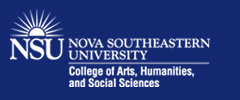Abstract
Six recent non-fiction graphic novels about the Palestinian-Israeli conflict are analyzed in order to understand how narratives are constructed and presented about each community. What emerges when considered together is that while complex narratives that challenge hegemonic stereotypes are depicted about the community that the authors favour, their depiction of 'the other' often relies on either stereotypes or omissions and these depictions present single stories of entire communities. I argue how the inclusion of alternative narratives within graphic novels can enhance the text, provide opportunities for readers to gain deeper knowledge about the conflict, and begin to appreciate and recognize the rights of the other can emerge.
Keywords
Israeli-Palestinian conflict, graphic novels, single story
Publication Date
5-2020
DOI
10.46743/1082-7307/2020.1624
Recommended Citation
Reingold, Matt
(2020)
"Getting Graphic: Depictions of Single Stories in Non-Fiction Graphic Novels about Israelis and Palestinians,"
Peace and Conflict Studies: Vol. 27:
No.
1, Article 5.
DOI: 10.46743/1082-7307/2020.1624
Available at:
https://nsuworks.nova.edu/pcs/vol27/iss1/5


